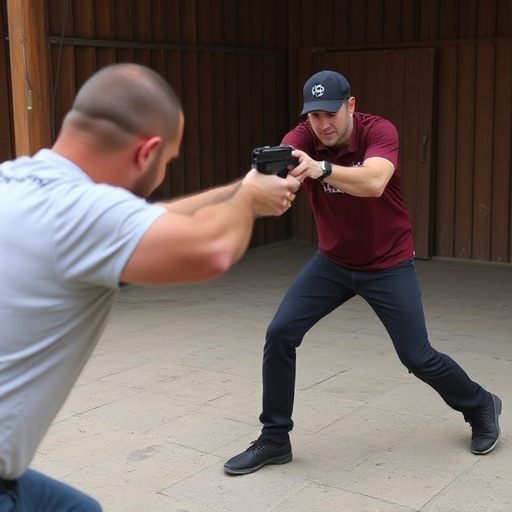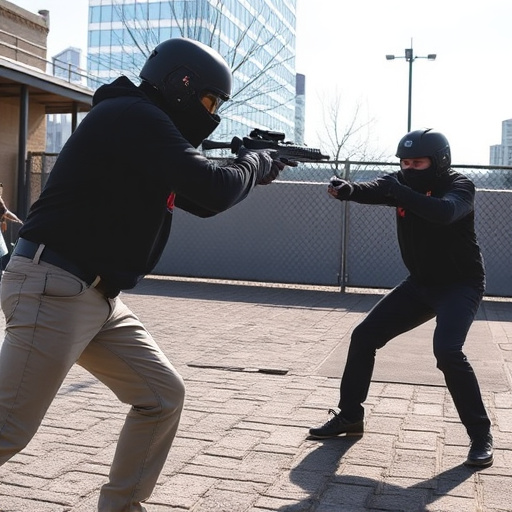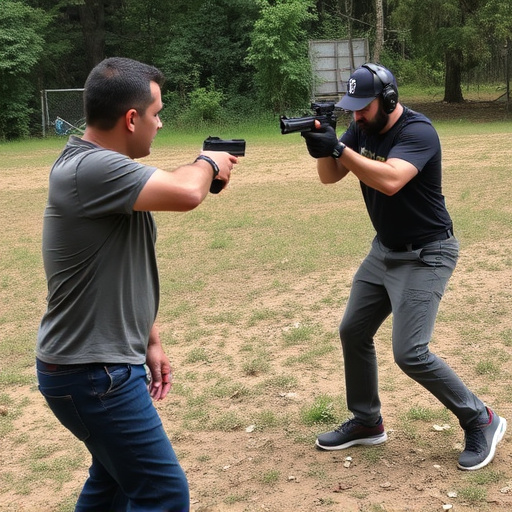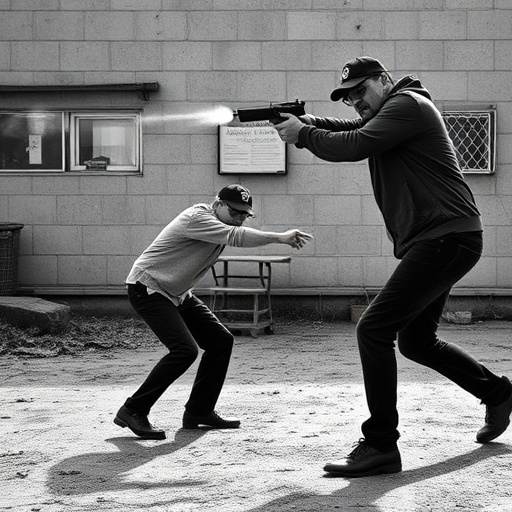Concealed weapon detection, especially for tactical stun guns with LED flashlights, is a growing concern in security and law enforcement. These non-metallic devices pose challenges for traditional detectors, leading to an evolving safety threat in public spaces. Tactical stun guns offer dual protection through LED lighting and electric shocks, making them versatile tools in low-light emergencies. Advanced detection methods, incorporating sensors, AI, thermal imaging, and motion detection, are emerging to combat the stealthy nature of these weapons. The legal landscape surrounding concealed stun guns varies globally, underlining the importance of responsible training, safety protocols, and stringent background checks to ensure community safety.
“As personal safety becomes a growing concern, the detection of concealed stun guns is a topic that demands attention. This article explores the intricate world of stun gun identification, addressing current challenges and future advancements in technology. From the seemingly mundane to the highly advanced, we delve into various methods used to uncover hidden weapons, including tactical stun guns with LED flashlights as a dual-threat deterrent. Understanding the legal and safety implications is crucial, especially when balancing privacy rights with public protection.”
- Understanding Concealed Stun Gun Detection: The Current Landscape
- Tactical Stun Guns with LED Flashlights: A Dual Threat Deterrent
- Challenges in Detecting Hidden Stun Guns: Why it's Not as Simple as It Sounds
- Technology Advancements: Enhancing Stun Gun Detection Methods
- Legal and Safety Considerations: Balancing Privacy and Public Safety
Understanding Concealed Stun Gun Detection: The Current Landscape

In today’s world, concealed weapon detection has become a critical concern for security and law enforcement agencies. With the rise in personal protection measures, stun guns have gained popularity as tactical tools, often integrated with advanced features like LED flashlights. These compact and powerful devices offer individuals an extra layer of safety, but they also raise questions about their detectability.
The current landscape of concealed stun gun detection is a complex one. Traditional metal detectors and x-ray machines at public venues may not always identify stun guns effectively due to their non-metallic components. Many modern stun guns employ materials like plastic and high-tech polymers, making them difficult for conventional scanners to pick up. However, this very feature also makes detection challenging. While some advanced security systems are being developed to identify specific energy signatures of stun guns, widespread adoption and standardization are still in progress. As a result, concerns persist regarding the effectiveness of current detection methods against tactical stun guns with LED flashlights, leaving authorities and public spaces facing an evolving challenge in ensuring safety.
Tactical Stun Guns with LED Flashlights: A Dual Threat Deterrent

Tactical stun guns equipped with LED flashlights offer a powerful dual-threat deterrent for personal safety. These innovative devices combine the effectiveness of a stun gun with the versatility and brightness of an LED flashlight, making them ideal for various self-defense scenarios. The tactical design includes features like high-intensity lighting, durable construction, and ergonomic grips, ensuring users can effectively deter potential threats in low-light conditions or during nighttime emergencies.
The LED flashlight component provides a significant advantage by illuminating dark areas, allowing users to gain a better understanding of their surroundings and assess potential risks. This added visibility can serve as a psychological deterrent, as the bright light may discourage would-be assailants. Moreover, the stun gun functionality delivers a strong electric shock, temporarily incapacitating an attacker, providing precious time for escape or assistance.
Challenges in Detecting Hidden Stun Guns: Why it's Not as Simple as It Sounds

Detecting hidden stun guns presents a unique challenge for security personnel and law enforcement officers, as these devices are designed to be concealed, often with features like compact sizes and tactical designs, including LED flashlights. Unlike traditional weapons, stun guns emit an electrical shock rather than a visible or audible signal, making their presence difficult to pinpoint without specialized equipment.
The lack of obvious indicators makes it challenging for individuals to determine if someone is carrying a stun gun. Even with advanced technology, such as metal detectors and thermal imaging cameras, identifying these devices can be tricky. This is because modern tactical stun guns are often made from non-metallic materials, which may not trigger standard security measures effectively. Additionally, the LED flashlight feature adds another layer of complexity, as it can obscure the detection process, further emphasizing the need for innovative and tailored detection methods.
Technology Advancements: Enhancing Stun Gun Detection Methods

With rapid advancements in technology, stun gun detection methods have evolved significantly, targeting both concealment and ease of use. Modern systems now employ advanced sensors and algorithms to identify hidden tactical stun guns with LED flashlights. These devices utilize a combination of thermal imaging, motion detection, and signature patterns to distinguish between ordinary objects and concealed weapons, enhancing security measures in high-risk environments.
For instance, some cutting-edge solutions integrate artificial intelligence (AI) to analyze real-time data from multiple sensors, improving accuracy and reducing false alarms. This technology is particularly useful in crowded areas like concerts or sports events where identifying a stun gun among numerous objects requires precise discernment.
Legal and Safety Considerations: Balancing Privacy and Public Safety

The legal landscape surrounding concealed stun gun possession varies widely across jurisdictions, reflecting a delicate balance between an individual’s right to self-defense and public safety. This is particularly pertinent when considering tactical stun guns equipped with LED flashlights, which offer enhanced visibility in low-light scenarios but also raise concerns about potential misuse. Law enforcement agencies and legislative bodies face the challenge of creating regulations that protect citizens without unduly restricting access to legal self-defense tools.
One key consideration is ensuring that individuals carrying stun guns, whether for personal protection or professional use, undergo proper training and adhere to strict safety protocols. This includes educating users on responsible handling, storage, and deployment to minimize the risk of accidental discharges or misuse. Additionally, implementing robust background check systems can help prevent armed individuals with a history of violence or mental health issues from acquiring tactical stun guns, thereby enhancing public safety.
As we’ve explored, concealed stun gun detection presents a complex challenge in balancing public safety and individual privacy. While current methods like metal detectors and advanced imaging technologies offer some solutions, they’re not foolproof, especially against modern tactical stun guns featuring integrated LED flashlights. The rapid advancements in technology, however, bring hope for more effective detection methods. Legal frameworks must keep pace with these innovations to ensure that public safety is enhanced without infringing upon civil liberties. Embracing tactical stun guns with LED flashlights as a dual-threat deterrent can contribute to a safer society if implemented alongside robust detection technologies and responsible legislation.
